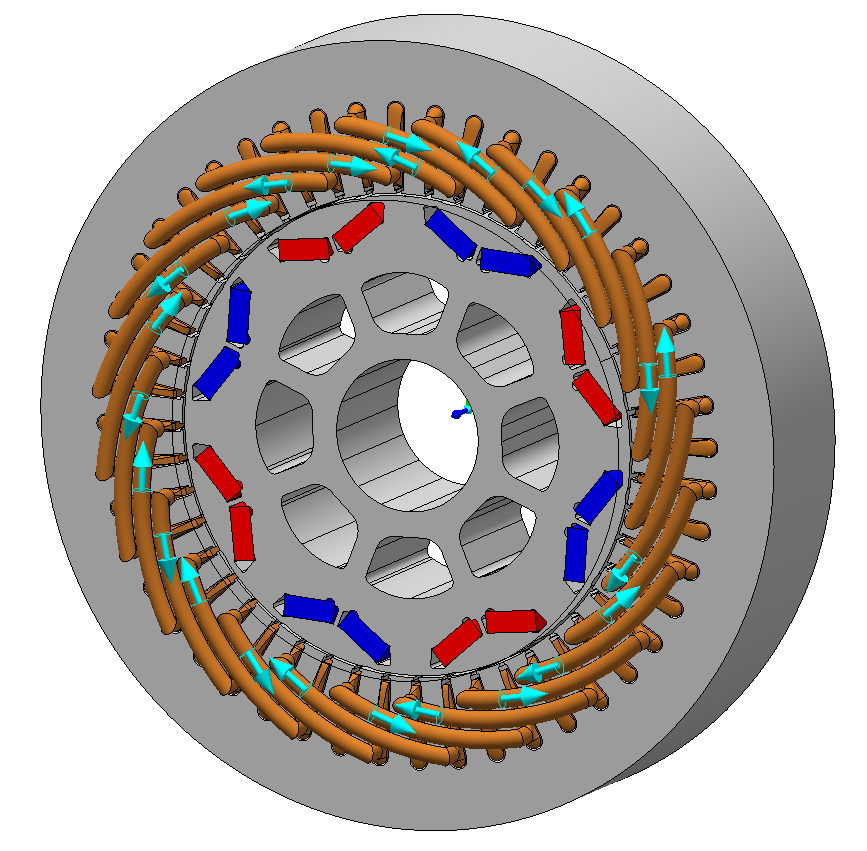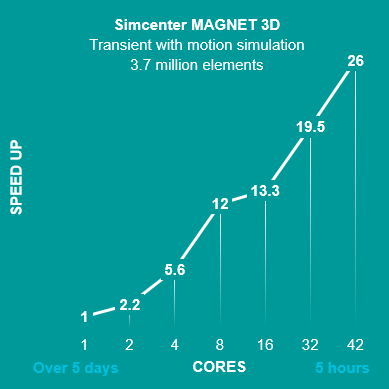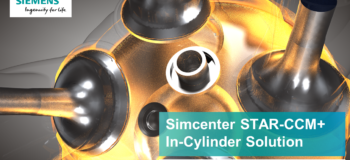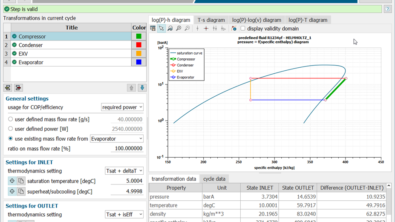Fast. Hum. Strong or Weak Magnet

Simcenter Magnet is at the center of so many of the EMAG capabilities within Simcenter. It can therefore be useful to take a look back in time at the highlights of previous releases to remind ourselves of some of its best features. One such significant release was 2020.2 that had three key updated. Firstly, it introduced new high performance computing capabilities that enabled simulations that took days to just take hours or minutes to finish solving. Secondly, calculating magnetostrictive forces (which cause that hummmmmmm you hear around power transformers) was added. Finally, improving the modeling capabilities of permanent magnets allow them to be defined as strong or weak. Let’s take a closer look.
Electromagnetic simulations on a HPC cluster
Building simulation into the design process requires that the desired information is available when needed. Waiting for data is not always an option. And when it arrives too late, it can lead to costly and avoidable redesigns or failures.
Every type of simulation has its own rhyme and reason for being computationally intensive, which increases the solution latency. To clarify, in the realm of low frequency electromagnetics simulations, some common causes include:
- Large and highly detailed models, which require fine meshes. For example, power transformers or complex electromechanical systems
- Fault conditions
- Rotor eccentricity
- Magnetic levitation or arbitrary motion
- Force calculations for NVH analysis
In 2020.2 Simcenter MAGNET added high performance computing capabilities (HPC) so that simulations can run across multiple processors on a cluster, which dramatically speeds up the simulation time compared to a single computer.
In short, this means low frequency electromagnetic simulation results are available in hours instead of weeks. Consequently, this speed up in solution time means you can discover insights earlier and bring electromagnetics into your Simcenter toolset of simulation driven design.


Electromagnetic simulations are time intensive. From Simcenter MAGNET 2020.2 onwards, simulations can run on HPC clusters. In this example, a large 3D electric motor transient with motion simulation (left) went from over 5 days to just over 5 hours to complete, achieving over a 25x speed up (right).
Magnetostriction with Simcenter MAGNET
Magnetostriction is challenging to model. Often it is a parasitic phenomenon that needs to be limited or eliminated. For instance, it causes vibrations and acoustic noise that is undesirable or adversely impacts the device performance.
So, what’s all the buzz about? Magnetostrictive forces, caused by a magnetic materials change in shape as a response to the magnetization process or being exposed to a fluctuating magnetic field, can cause stresses and strains in that material. Consequently, these may lead to material extension and contraction, which causes vibration and noise. Since 2020.2, Simcenter MAGNET includes magnetostrictive force and field calculations.

This includes calculation of force fields in 2D and 3D, Time-Harmonic and Transient (with and without Motion) of magnetostriction:
- Nodal Force
- Force Density
- Discontinuity Force Density
For example, let’s examine a power transformer. The magnetostrictive properties of the steel sheets in the core will cause it to expand and contract as the magnetic field oscillates. This change in shape is invisible to the eye, however it causes vibrations that manifest as sound. The design generally fixes the amount of noise, which makes simulation and accurate prediction of these forces critical. Organizations like American National Standards Institute (ANSI) have standards regarding the sound level that a power transformer can produce.
In other devices, such as sensors and actuators, the effect is leveraged to carry out their desired operation. You can read How do magnetostrictive sensors work?, a blog from Linear Motion Tips, to learn more about these devices.
Enhancements to demagnetization and loss calculations
Extending the work done in Simcenter MAGNET 2020.1, enhancements were made to the modeling capabilities of permanent magnets with regards to their irreversible demagnetization behavior. Users can define permanent magnets as strong or weak. The reclassification affects the modeling methods used which have been refined based on experimental measurements.
Improved hysteresis loss calculations were added for time harmonic solvers. This extends the ability to analyze transformers and induction machines accurately and rapidly.
In this webinar Drive cycle based design and optimization of electric machines, some of the features in Simcenter MAGNET and Simcenter Motorsolve past releases were presented.


